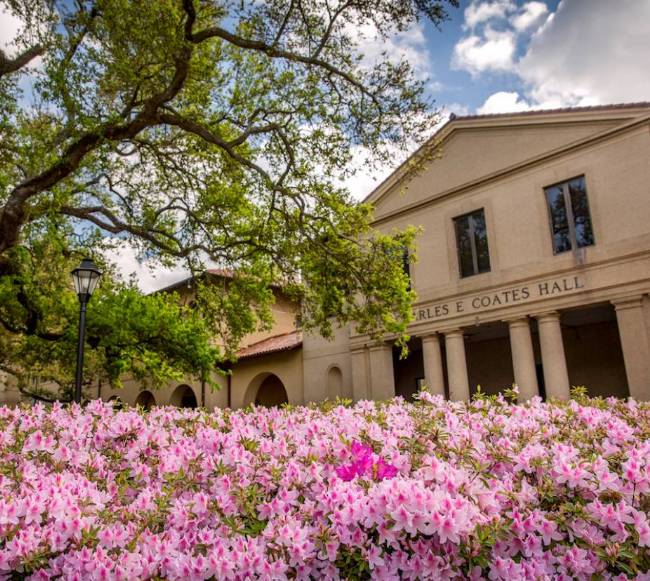LSU Student Named National Geographic Explorer for Groundbreaking Study on Bird Foraging Behavior
February 06, 2025
Juliana Damasceno, a graduate student at the LSU Museum of Natural Science (LSU MNS), has been awarded a prestigious grant from the National Geographic Society to become a National Geographic Explorer. The grant will fund her research in the Colombian Amazon, where she and a team of scientists will study the remarkable adaptations of ant-following birds, which have evolved unique strategies to find food. The impact of this research could provide new insights into avian foraging behavior and the role of scent in bird ecology.

Juliana Damasceno is a second-year PhD student at the LSU Museum of Natural Science.
As a National Geographic Explorer, Damasceno joins a prestigious global network of scientists committed to illuminating and protecting the natural world. In addition to funding, she will receive professional development opportunities, leadership training, and resources for building a global community of collaborators.
"Being named a National Geographic Explorer is such an honor. It’s a chance to highlight the amazing connections in our ecosystems, work with other explorers, and bring attention to the need to protect biodiversity."
Juliana Damasceno
Damasceno’s study focuses on a critical adaptation of these birds: their ability to track the temporary nests, or bivouacs, of army ants, which are frequently relocated overnight.
Army ants have been dramatized in movies and television shows, portrayed as massive raids devouring everything in their path. But they are actually vital in tropical environments, serving as both predators and ecosystem engineers.
As relentless hunters, they regulate insect and small animal populations, maintaining balance in the food web. Their foraging also supports nutrient cycling by breaking down organic matter and dispersing nutrients. Additionally, they form intricate symbiotic relationships with numerous species, including antbirds, lizards, and frogs. As the ants move through the forest, they disturb leaf litter, flushing out insects and small creatures. Antbirds stay close to the ant columns, quickly seizing the fleeing prey as they emerge.
"Our hypothesis is that ant-following birds use olfaction to detect the chemical trails left by the ants," Damasceno explained. "Preliminary genomic data indicate these birds possess a high number of olfactory receptors, suggesting that their sense of smell might play a more important role in their behavior than previously thought."

The Ocellated Antbird (Phaenostictus mcleannani) is among the many bird species that follow army ant swarms, capitalizing on the chaos of the raids to catch insects escaping the ants.
– Image Credit: Adobe Stock
The expedition will bring together a multidisciplinary team of ornithologists from Colombia, Brazil, and the United States, along with members of local communities. The research is supported through a partnership with the Instituto Alexander von Humboldt, where Dr. Gustavo Bravo, Curator of Birds and an LSU MNS PhD alumnus, serves as a key collaborator.
Damasceno is a second-year PhD student working with Assistant Professor Gregory Thom at the LSU MNS. Dr. Thom is the Curator of Genetic Resources, and his research uses genomics to explore how new species of birds are formed and shaped by natural selection in tropical ecosystems. "It’s a great achievement for a graduate student to be named a National Geographic Explorer. The lab as a whole is really excited about this project that will open many doors for Juliana’s career development," said Dr. Thom about the award.
Next Steps
Let LSU put you on a path to success! With 330+ undergraduate programs, 70 master's programs, and over 50 doctoral programs, we have a degree for you.


